Arthur Fleischmann Museum – why visit?
– It’s small – an entrance hall and just two rooms – conveniently situated in a 16th century Renaissance building, once owned by his family, in the center of the Bratislava Old Town. The admission ticket is just 3 Euro. All you need is to walk one minute from the Main Square to the Biela street and climb 15 wooden stairs to get on the 1st floor, where the museum is located. This unique place is also an excellent choice during your day trip from Vienna, or your day trip from Budapest.
– Arthur Fleischmann (1896-1990) was a fascinating man and sculptor, who worked in a wide variety of media and whose work reflected the many places he lived– Central Europe, South Africa, Bali, Australia, and finally England, where he married and stayed for the last 40 years of his life.
– This is the only museum in the world dedicated to his work. Ceramics, wood, wax, marble, fiberglass, resin, bronze – and Perspex/Plexiglass. He even designed and made furniture and jewelry.
– On the ground floor of the same building there is “The Oldest shop in the Museum” crammed with authentic local food and wine, as well as souvenir items, one of Bratislava points of interest. Taste our local specialty Bratislava sweet rolls with poppy seed filling or walnut filling. You will be able to get traditional Slovak cheese, such as bryndza (fermented soft sheep cheese) or oštiepok (smoked sheep cheese). Wine offer is wide, wines made from wine grapes, including Tokaj wine from Slovakia, but also wine made from red and black currants, another local specialty.
– Just 3 minutes walk from Fleischmann museum and the same admission ticket also get you into another small and quirky museum in Bratislava city center – birthplace of the composer Johann Hummel, friend of Beethoven, on Klobučnícka street. Both museums belong to the City museums, established 150 years ago (www.muzeum.bratislava.sk/en/).
About Arthur Fleischmann
– Born into a Jewish family in Bratislava – then part of the Austro-Hungarian Empire (former name Pressburg) – Fleischmann studied at the Evangelical Lyceum in Bratislava and then became a physician first at the insistence of his merchant father. He inherited artistic genes from his painter mother and studied art in Prague at the same time that he attended medical school in Budapest and later in Prague. In addition to his medical practice as a dermatologist in Vienna, he worked as the technical and art director of Nike, a famous Viennese ceramic factory. Most of his works from the 1930s are glazed ceramic pieces.
– As anti-Jewish regulations increased in pre-WWII Europe, Fleischmann, as a doctor for the Vienna ice hockey team, left for South Africa (1937) and then Bali, where he converted to Catholicism. In 1939, he escaped from Bali before the Japanese invaded and sought refuge in Australia, where he remained for ten years. He was a founding member of the Merioola Artists Commune. Wanting to return to Europe, but seeing the Soviet grip on Czechoslovakia tighten following WWII, Fleischmann then moved to London, where he soon met Cecile Joy, the woman who became his wife, and where he settled permanently. He died just 4 months after the collapse of the socialism in Czechoslovakia (1948 to 1989) and he could not visit his free homeland since he left.
Most of the works from Fleischmann’s English period portray famous people and religious themes, including busts of four popes.
Now let’s look at some of Fleischmann’s work:
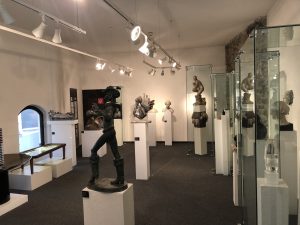
[General view of the second room of the Museum]
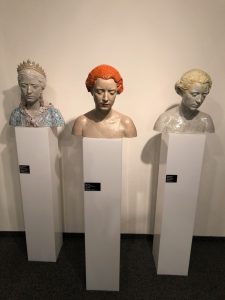
[Head of the famous Vienna actress, Julia Jansen, 1930]
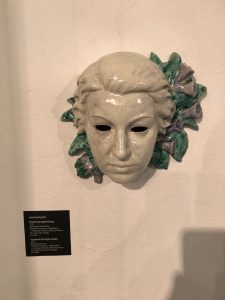
[mask of Lilly Sigall, 1937]
Arthur Fleischmann made the mask of the beautiful hostess Lilly Sigall during her honeymoon trip on the same steamer to South Africa. Sixty years later on a party in London Cecile Joy Fleischmann met Lilly Sigall. After the party Lilly Sigall donated her the mask.
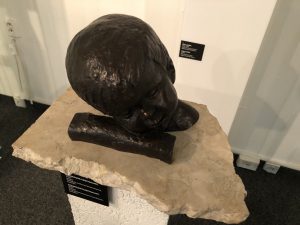
[The Mask of Dominique – the only son of Arthur Fleischmann, 1962]
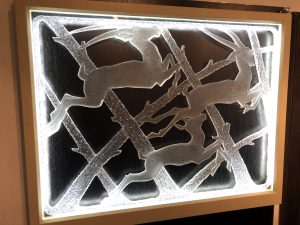
[Hochhauser Coffee Table – wood and Plexiglass/Perspex, 1960s]
Wooden coffee table with perspex top, the only piece of furniture in the museum originally made for his close friend and admirer, Mr. Hochhauser. They were friends since WWI military service.